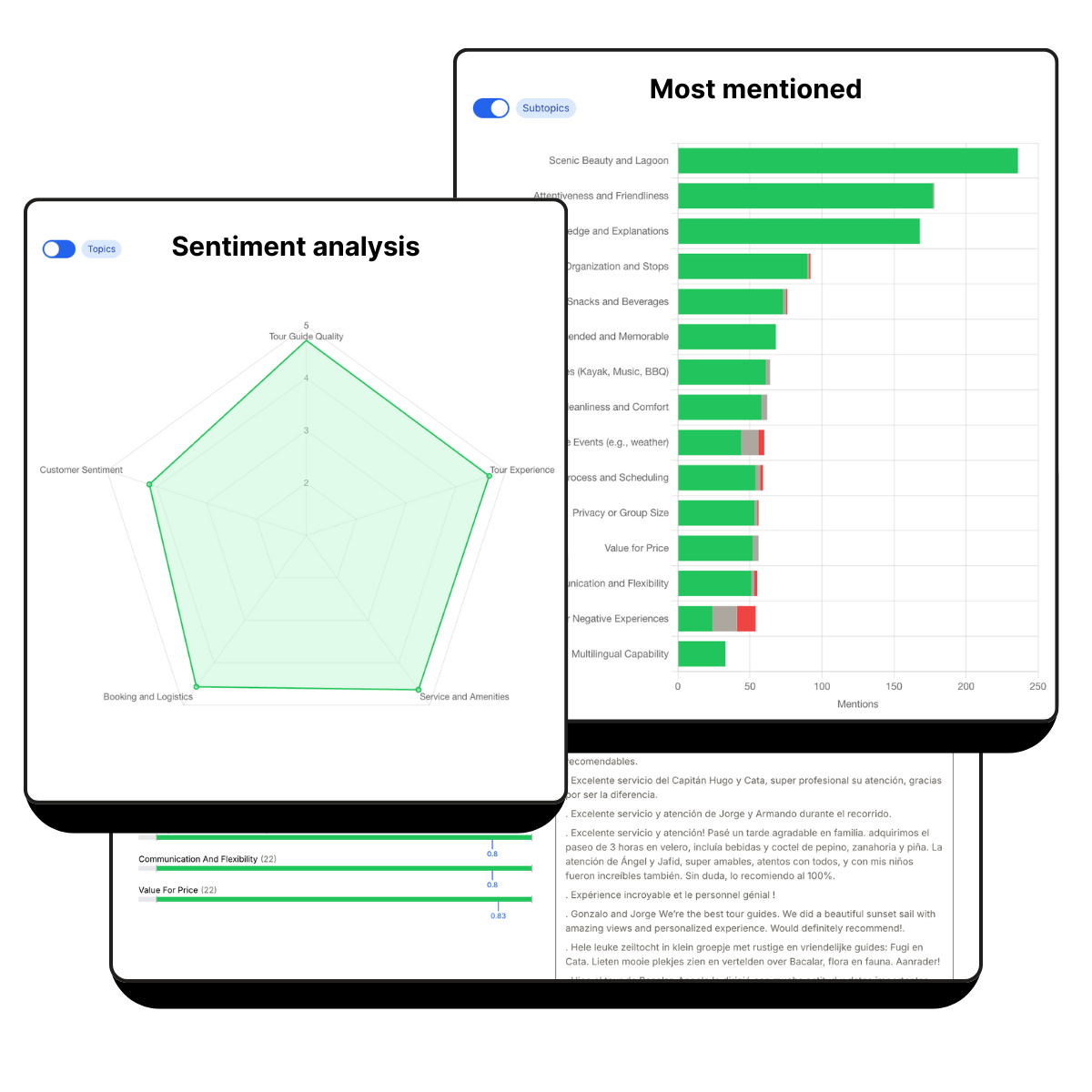Get up and running in minutes
Upgrade when you're ready
14 Day Free Trial • No Credit Card Required








Get up and running in minutes • Upgrade when you're ready
14 Day Free Trial • No Credit Card Required

Each AI reply agent gets its own custom prompt, context, and memory.
Create multiple agents that work independently for different brands, locations or review types. Learn more.

If it's got stars, we support it • No add-on • No hidden cost
We track reviews in every country, in every language. Learn more.

Answer reviews directly from Zendesk, Intercom, or any other helpdesk
Get review alerts in Slack, Microsoft Teams, or any other IM software. Learn more.

Leverage advanced, language-agnostic, large language models to extract most mentioned topics
Let our AI agents surface review extracts that speak to each topic with sentiment scores.

Don't settle for 5-6 pre-built charts with basic filters. Create exactly the reports you need with custom filters and metrics.
Save reports and email them to whoever needs them. Learn more.

Install the Reviewflowz MCP integration for Claude or ChatGPT and get answers without building reports or writing queries.
Which staff member gets mentioned most? • Find testimonials about our booking process. • What are common complaints?

Your CRM or booking system already handles customer emails. Let it keep doing that.
Magic Links work with any platform because there's no integration required. Just paste a URL into your existing workflows
Build leaderboards to see which team members, locations, or products generate the most reviews. Learn more.
Use it for incentives, recognition, or healthy competition. Turn review collection into something your team want to win at.

Showcase reviews directly on your website to build trust with visitors.
Simple embed code • Fully customizable design • Updates automatically as new reviews come in